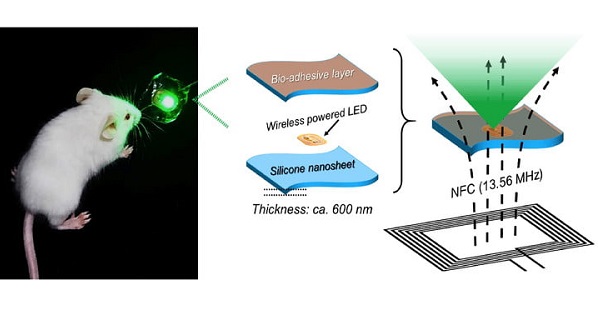Besides display and lighting, LED technology applications in medical field have been progressing to create possibilities for curing cancer. Researchers at Waseda University, Japan have developed an implantable device consisting of LED chips and bio-adhesive nanosheet which has successfully shrank the tumors in mice through photodynamic therapy. The result was published in Nature Biomedical Engineering journal on July 16th 2018.
With the aim to apply metronomic photodynamic therapy (mPDT) which is a treatment using special drugs and particular lights to kill cancer cells with low-dose in the long-term, the device was designed to be attached onto the inner surface of animal tissue where it could release low intensity irradiation to treat targeted lesions.

(Image:Toshinori Fujie)
The research team stated that the device decreased the light intensity by 1,000-fold compared with conventional PDT approach to avoid damage on normal tissue while effectively treating tumors. According Toshinori Fujie, the research team leader, the device might lead to strategical treatments for cancerous tumors in organs like the brain or pancreas as it is risky to conduct surgery or radiotherapy for these body parts. By directly fixing the device with mPDT on the target tumor, it could reduce the threat to the healthy areas.












